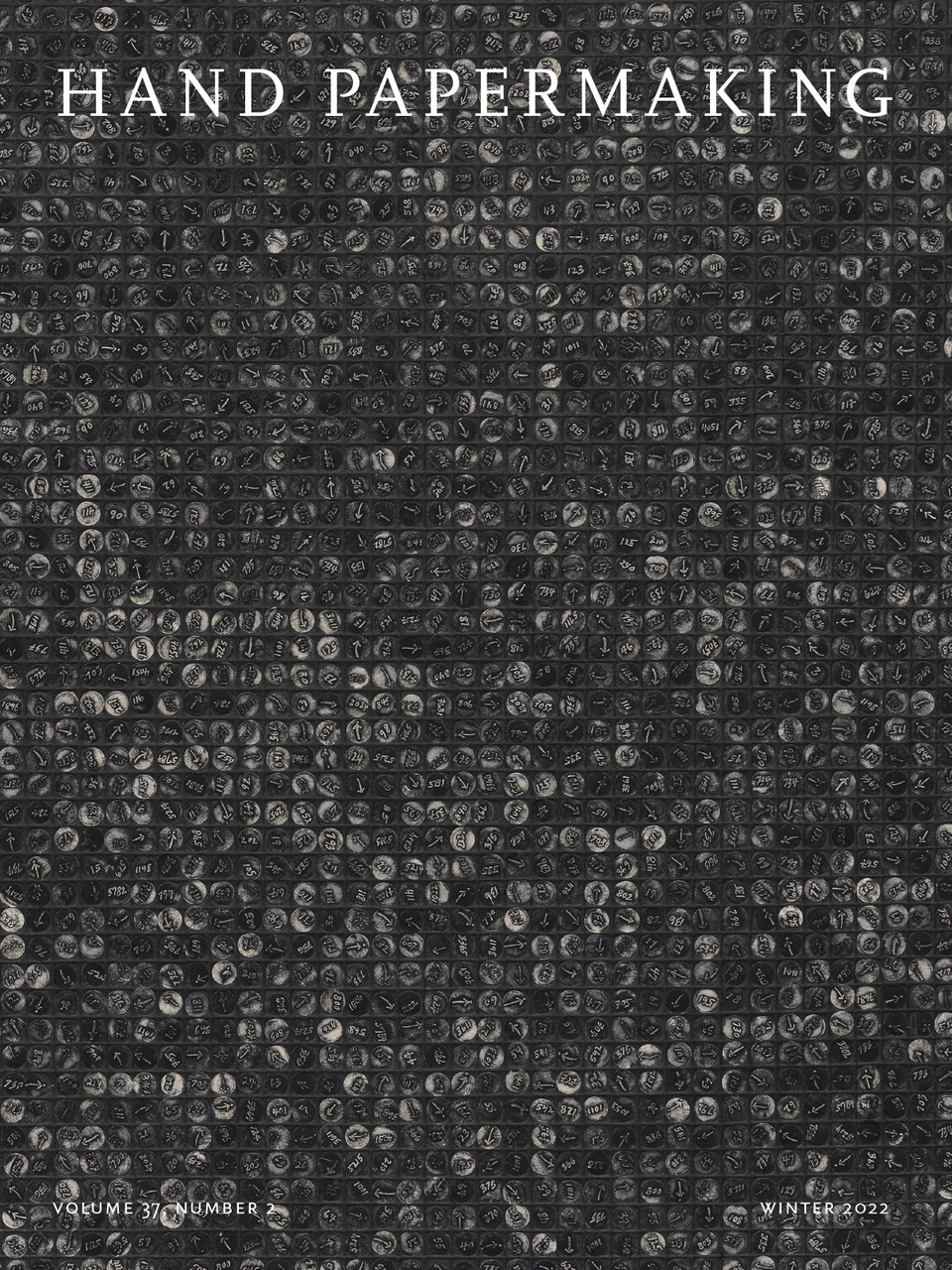I make and teach paper in three spaces––my personal studio, the classroom at the University of the Arts, and the classroom at the Pennsylvania Academy of Fine Art, which is also used for the Brodsky Center. Only the Brodsky Center has a floor drain, and the enthusiasm of the students working in that setting is never bridled with the need for mopping, vacuuming, or hauling water. How easy it is to take a floor drain for granted when you have one! I made this calculation once in my personal studio without a floor drain: after a day of pulling 30 sheets of 19 x 26-inch paper and disposing of water, I lifted approximately 2,000 pounds. In the 10 years I have been operating without a floor drain, I have developed a number of tactics to reduce the amount of water I use and to control where and how it spills so my time and energy are not wasted.
essential materials
•
Plastic sheeting
•
Duct tape
•
Sponges
•
Extra buckets, vats to catch dripping water
•
Colander with separate strainer mesh for optimal condensing/removal of pulp
•
Wet vac, mop, or ShamWow to remove water that made it to the floor
•
Dehumidifier or box fan to dry the floor
•
Dolly or rolling cart to move buckets of waste water
pulling sheets
Use a two-vat system, one for pulling sheets and one for draining. The drain vat can be used for rinsing and cleaning at the end of your session while it catches drips between the pulling vat and couching surface.
couching surface
•
Elevate the far end of the board to create a slanted surface that allows water to run off into a bucket near your feet. Sweep excess water with a
sponge to the same bucket.
OR
•
Place the board flat inside a large waterproof tray with a hole drilled in one corner to drain the water off into a bucket, or build a table that acts like a “tray.” See Tim Barrett’s drawing in Japanese Papermaking.
pressing
In my studio, I modified an H-frame (bottle jack) hydraulic press. With some basic carpentry, plastic sheeting, and duct tape, you can direct all of the press water into a 5-gallon bucket, no spills.
cleaning up
•
Spray out moulds over the drain vat.
•
As paper is removed from Pellons, lay the Pellons into the drain vat and gently sweep away clinging pulp from both sides.
•
Set a saw horse in a vat to catch water dripping off of the Pellons, and once most dripping has stopped, hang the Pellons on a line to dry.
OR
•
Hang Pellons directly on a line above empty vats or buckets or above a plastic sheeting “gutter.”
captured water can be used for:
•
Cleaning and rinsing Pellons and tools
•
Rinsing pulp from hands and forearms
•
Soaking your next load of papermaking fiber
disposal of water
Always strain your waste water, especially if you intend to re-use it for soaking fiber or watering your garden. Triple filter it before putting it down the sink. Otherwise, the toilet can take water with any amount of pulp debris. You should always be sure you are not disposing of heavy metals (some pigments) or highly alkaline liquid (cooking liquor). In this case, pH neutralize the water or allow the water to evaporate, then dispose of crystalline or metal solids.
___________
NOTES
1.
See figure 53 “Work Table” in Timothy Barrett, Japanese Papermaking: Traditions, Tools, and Techniques (New York: 1993), 110.






